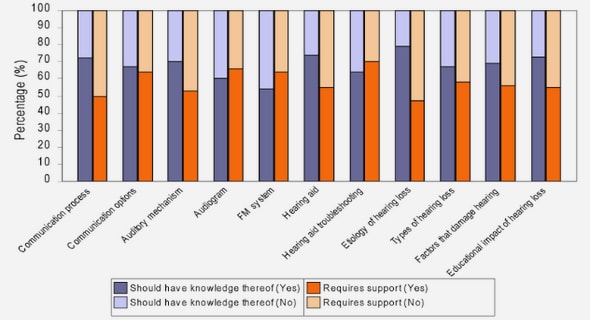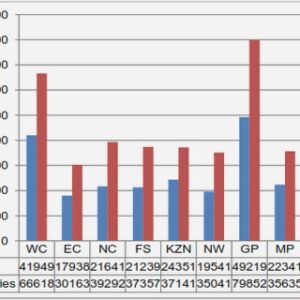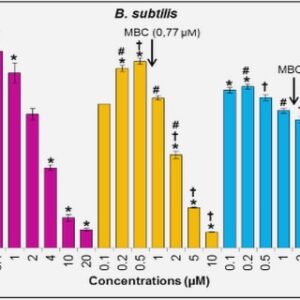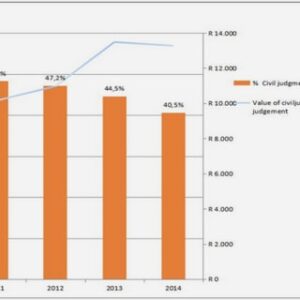(Downloads - 0)
For more info about our services contact : help@bestpfe.com
Table of contents
CHAPTER I. LITERATURE REVIEW
I.1 Activated sludge (AS) process
I.1.1 Aeration systems
I.2 Principles of gas-liquid mass transfer
I.2.1 The volumetric oxygen transfer coefficient (kLa)
I.2.2 The liquid-side mass transfer coefficient (kL)
I.2.3 Specific interfacial area (a)
I.2.4 Gas-liquid dispersions
I.2.4.1 Gas and liquid velocities
I.2.4.2 Homogenous and heterogeneous regime
I.2.4.3 Bubble size
I.2.4.4 Bubble terminal velocity
I.2.5 Design and operation parameters affecting oxygen transfer in clean water
I.2.5.1 Gas diffusers density and distribution
I.2.5.2 Gas diffuser type
I.2.5.3 Submergence of diffusers
I.2.5.4 Superficial gas velocity
I.2.5.5 Liquid circulation velocity
I.2.6 Oxygen transfer in activated sludge
I.2.6.1 Dissolved oxygen saturation concentration in activated sludge (Cs’)
I.2.6.2 Activated sludge properties affecting the oxygen transfer coefficient (kLa’)
I.3 Rheology principles
I.3.1 Laminar shear flow
I.3.2 Rheological measurements
I.3.2.1 Rheometers
I.3.3 Rheological behaviours
I.3.3.1 Non-Newtonian fluids
I.3.4 Activated sludge rheology
I.3.4.1 Activated sludge thixotropy
I.3.4.2 Activated sludge rheology modelling
I.3.4.3 Sensitivity of activated sludge rheology to measurement conditions
I.3.4.4 Activated sludge properties affecting the rheological behaviour
I.3.5 Shear rate in aerated bioreactors
I.4 Conclusions on the literature review and work positioning
CHAPTER II. MATERIALS AND METHODS
II.1 Oxygen transfer in clean water and with activated sludge
II.1.1 Experimental setup: Bubble column and aeration system
II.1.2 Measurements of oxygen transfer coefficient in clean water (kLa)
II.1.2.1 Reoxygenation method – Principles
II.1.2.2 Measurement protocol
II.1.3 Measurements of oxygen transfer coefficient in activated sludge (kLa’)
II.1.3.1 Off-Gas method – Principles
II.1.3.2 Experimental setup for oxygen transfer measurements with activated sludge
II.1.3.3 Off-gas measurement protocol
II.1.3.4 Validation of the off-gas method with the reoxygenation method in clean water
II.1.4 Hydrodynamic characterization of the bubble column
II.1.4.1 Measurements of the overall gas hold-up (εG)
II.2 Activated sludge rheological measurements
II.2.1 Construction of a tubular rheometer
II.2.1.1 Rheometer specifications
II.2.1.2 Principles of a rheological measurement with a tubular rheometer
II.2.1.3 Design of the tubular rheometer
II.2.1.4 Description of the constructed tubular rheometer
II.2.2 Rheological behaviour of activated sludges from different plants
II.2.3 Activated sludge rheology and oxygen transfer measurements on site
II.2.4 Temperature effect on the activated sludge rheological behaviour
II.3 Physicochemical characterisation of activated sludge
II.4 Statistical analysis
CHAPTER III. DEVELOPMENT OF A METHODOLOGY TO CHARACTERISE THE RHEOLOGICAL BEHAVIOUR OF ACTIVATED SLUDGE
III.1 Rheometer measurement uncertainty
III.1.1 Theoretical measurement uncertainty
III.1.2 Experimental error with tap water
III.2 Rheological measurements with activated sludge
III.2.1 Setting up a rheological measurement with activated sludge
III.2.1.1 Sample volume
III.2.1.2 Stirring speed in the feeding reservoir
III.2.1.3 Sample storage
III.2.2 Applying the Rabinowitsch-Mooney correction
III.3 Comparing the flow curves obtained with the tubes of different diameter .
III.4 Temperature effect on the rheological behaviour of activated sludge
CHAPTER IV. RHEOLOGICAL BEHAVIOUR OF ACTIVATED SLUDGE FROM DIFFERENT ORIGINS
IV.1 Experimental conditions
IV.2 Characterisation of the rheological behaviour
IV.3 Impact of activated sludge physicochemical properties on rheological behaviour
IV.3.1 Correlation between physicochemical characteristics of interstitial liquid and apparent viscosity
IV.3.2 Correlation between physicochemical characteristics of particulate phase and the sludge apparent viscosity
IV.3.2.1 Impact of mixed liquor suspended solid concentration on apparent viscosity
IV.3.2.2 Impact of other physicochemical characteristics of the particulate phase on apparent viscosity: Introducing the floc structure as an impacting parameter
IV.4 Modelling the rheological behaviour of activated sludge
IV.4.1 Evaluation of existing models
IV.4.1.1 Correlation between rheological parameters and MLSS concentration
IV.4.1.2 Modelling experimental rheograms with MLSS concentration
IV.4.1.3 Comparison of the developed model with other studies
IV.5 Conclusions
CHAPTER V. MEASUREMENT AND INTERPRETATION OF OXYGEN TRANSFER PARAMETERS IN A BUBBLE COLUMN LOCATED ON SITE
V.1 Experimental conditions
V.2 Preliminary measurements in clean water at different temperatures
V.2.1 Temperature effect on the overall gas hold-up
V.2.1.1 Experimental results
V.2.1.2 Influence of temperature on gas hold-up: potential mechanisms
V.2.1.3 Conclusion on the effect of temperature on the overall gas hold-up
V.2.2 Overall gas hold-up temperature correction
V.3 Impact of diffuser type of on oxygen transfer in clean water
V.3.1 Oxygen transfer volumetric coefficients
V.3.2 Characteristics of the gas/liquid dispersion
V.3.2.1 Overall gas hold-up
V.3.2.2 Bubble size, interfacial area and liquid-side volumetric coefficient
V.3.3 Transfer number in clear water
V.3.4 Conclusions
V.4 Oxygen transfer in activated sludge
V.4.1 Oxygen transfer coefficients (FB and CB diffusers)
V.4.2 Characteristics of the gas/liquid dispersion: overall Gas hold-up (FB and CB diffusers) ..
V.4.3 Impact of sludge properties on oxygen transfer parameters
V.4.3.1 Statistical analysis of sludge properties on oxygen transfer
V.4.4 Alpha factor
V.4.4.1 Impact of operating conditions on alpha factor
V.4.4.2 MLSS concentration: A key parameter for alpha factor modelling?
V.5 Conclusions
CHAPTER VI. CONTRIBUTION OF RHEOLOGICAL MEASUREMENTS TO INTERPRET GAS/LIQUID OXYGEN TRANSFER
VI.1 Apparent viscosity for the conditions prevailing in the bubble column
VI.1.1 Rheological models
VI.1.2 Estimation of the average shear rate in the bubble column for the operating conditions
VI.1.3 Impact of the activated sludge apparent viscosity on the oxygen transfer coefficient ……
VI.1.4 Modelling the oxygen transfer coefficient in AS considering its non-Newtonian behaviour
VI.1.4.1 Model development
VI.1.4.2 Transfer number and oxygen transfer coefficient models for fine and coarse bubble aeration
VI.1.5 Interpreting oxygen transfer results with the help of the apparent viscosity
VI.1.6 Alpha factor
VI.2 Conclusions
CONCLUSIONS AND PERSPECTIVES
BIBLIOGRAPHY




